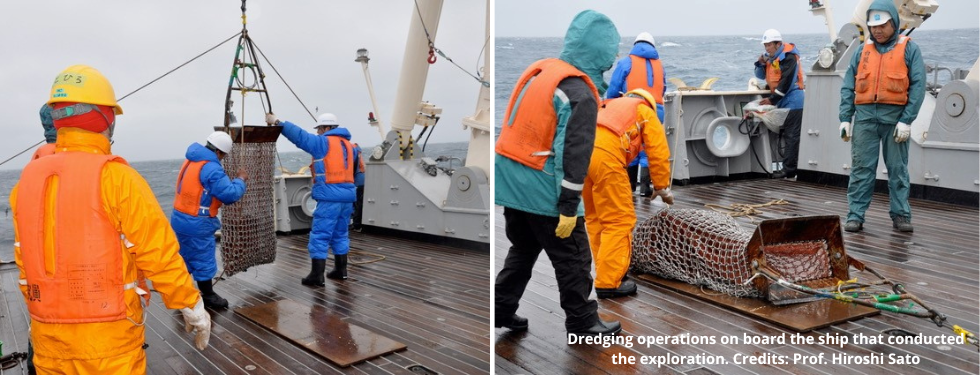Changes at the India-Eurasia convergence triggered repeated hot spot volcanism in the Indian Ocean

Large magmatic structures, known as submarine large igneous provinces (LIPs) cover at least 3% of the world’s seafloor. Many LIPs formed during the Cretaceous by cataclysmic eruptions lasting less than 3 Ma, spewing massive outpouring of millions of km3 of “flood” basalts.
Such magmatic outbursts occur when the inflated (i.e., mushroom-like) heads of hot mantle plumes rise from deep inside the Earth and reach the base of the lithosphere. In terms of magma flux, volume, and extent, such LIPs dwarf even the most prodigious present-day plumes, such as Iceland and Hawaii. While a significant amount of their volume erupts within a short period, sporadic eruptions can extend over tens of millions of years. As these latter eruptions remain fixed to the LIP, this challenges the view of their genesis through the transition from the plume head to its tail.
Two oceanic Japanese expeditions in the furious fifties (the area of the Earth between 50 and 60 degrees south, prone to strong winds), led by Professor Hiroshi Sato and his colleagues, were conducted to sample one of the least explored LIPs found on Earth, the Conrad Rise, located midway between the Antarctic continent and the Southwest Indian Ridge. Earlier interpretations from magnetic data led scientists to believe this LIP may have formed in the late Cretaceous near a triple junction. The new geochronological data of Sato et al. (2024) published in Journal of Geophysical Research – Solid Earth this month reveal more than three later unexpected pulses of major eruptions (43.1-43.7 Ma, 35.3-38.2 Ma, and 8.5 Ma) releasing diverse compositional magma fluxes.
Their research, in which Prof. Christine Meyzen of the Department of Geosciences of the University of Padua also participated, shows that this series of massive eruptions coincides with the timeline of major kinematic plate reorganizations within the Indian Ocean. Importantly, they also occur at the time of major dynamic and tectonic changes at the India-Eurasia plate convergence (i.e., break-up of Neo-Tethys oceanic slab and Lhasa lithosphere removal during the middle Eocene, a directional change at the convergence in the late Eocene and Asian lithosphere delamination during the late Miocene).
Sato et al. (2024) believe that these changes at the India-Eurasia convergence might have significantly modified the stress field pattern of the Indian Ocean each time, favoring sequential “mantle blob” release from one branch of a deep mantle plume underneath southern Africa emerging toward the surface across the Indian ocean.
Their research outlines how tectonic and dynamic changes at collision belts can have a far-field cascade effect on the deep mantle structure triggering propagations of plume-fed asthenospheric waves, which then source massive eruptions.
PRESS INFORMATION
TITLE: The Conrad Rise Revisited: Eocene to Miocene Volcanism and Its Implications for Magma Sources and Tectonic Development
LINK TO THE RESEARCH: https://agupubs.onlinelibrary.wiley.com/doi/10.1029/2023JB027380
DOI: 10.1029/2023JB027380
AUTHORS: Sato, H., Machida, S., Meyzen, C. M., Ishizuka, O., Senda, R., Bizimis, M., et al. (2024)





